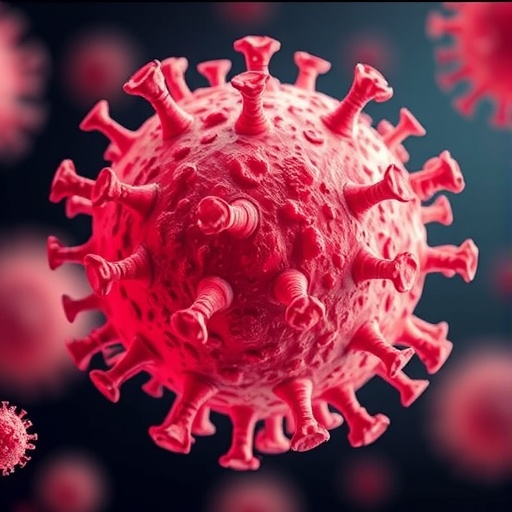
In a groundbreaking study, researchers have ventured into the intriguing world of bacteriophages, particularly focusing on their application against multi-drug-resistant strains of bacteria. The publication led by Cheng, Wang, and Zhang reveals vital insights into the isolation and characterization of a bacteriophage targeting Microbacterium esteraromaticum, a bacterium notorious for its resistance to various antibiotics. This research addresses an urgent global health challenge, as antibiotic resistance continues to escalate, threatening effective treatments for common bacterial infections.
The study meticulously outlines the methodology employed by the researchers in isolating the bacteriophage. Utilizing environmental samples, the researchers were able to identify a specific phage capable of infecting Microbacterium esteraromaticum. The process involved a series of enrichment cultures combined with plaque assays to isolate and characterize the active phage. This robust approach ensures the identification of phages with a high specificity to the target pathogens.
Characterization of the bacteriophage included genomic analysis, which revealed the phage’s DNA structure and potential mechanisms of action. The genomic data was analyzed using advanced bioinformatics tools designed to identify genes associated with pathogenicity and antibiotic resistance. This genomic insight is crucial, as it aids in understanding how the phage can effectively combat the resistant strains, offering a glimpse into its therapeutic possibilities.
.adsslot_xLo1ZAVQUh{width:728px !important;height:90px !important;}
@media(max-width:1199px){ .adsslot_xLo1ZAVQUh{width:468px !important;height:60px !important;}
}
@media(max-width:767px){ .adsslot_xLo1ZAVQUh{width:320px !important;height:50px !important;}
}
ADVERTISEMENT
The study’s findings indicate that the bacteriophage not only showed efficacy in laboratory settings but also demonstrated potential for practical applications. By applying the phage in various experimental conditions, the researchers were able to assess its antibacterial activity against multi-drug-resistant Microbacterium esteraromaticum. The results herald promising implications for the development of alternative treatment strategies, especially in an era where traditional antibiotics are becoming increasingly ineffective.
Furthermore, the research assessed the stability of the bacteriophage under varying conditions. This aspect of the study is essential for understanding how phages can be used in real-world treatments, where factors such as temperature and pH levels can vary significantly. The ability of the bacteriophage to withstand these conditions suggests that it could be viable for clinical applications, leading to potential breakthroughs in phage therapy development.
One of the most notable outcomes of this study is the elucidation of the bacteriophage’s lytic versus lysogenic behavior. Researchers discovered that this phage primarily exhibits lytic properties, ensuring rapid lysis of the bacterial host. This is a crucial factor in therapeutic contexts, as lytic phages are typically preferred for their ability to destroy bacterial cells quickly, reducing the risk of potential bacterial resurgence.
As antibiotic resistance becomes a pressing concern for medical fields worldwide, the development of bacteriophage therapies as an alternative or adjunct to conventional antibiotics is gaining momentum. The unique characteristics exhibited by the isolated bacteriophage present a pathway toward addressing some of the most drug-resistant infections. This shift in perspective towards bacteriophages not only broadens the horizon for combating infections but also diversifies the arsenal available to healthcare providers.
In terms of public health impact, the implications of this research are profound. With rising antibiotic resistance contributing to increased morbidity and mortality rates globally, innovative strategies to tackle resistant infections are more necessary than ever. Bacteriophages, like those characterized in this study, could provide a pathway to effectively managing infections that have historically been difficult to treat.
The authors of this study emphasize the importance of continued research in this field. Their findings serve as a springboard for further investigations into other bacteriophages targeting various multi-drug-resistant pathogens. This could potentially lead to the development of a more holistic phage therapy system, where multiple phages work synergistically to tackle a range of antibiotic-resistant bacteria.
Overall, the isolation and characterization of this specific bacteriophage marks a significant advancement in the field of microbiology and infectious disease treatment. The integration of genomic technologies with traditional microbiological techniques exemplifies the interdisciplinary approach necessary to drive innovation in healthcare solutions.
As we look to the future, the potential for bacteriophage therapies may ultimately undergo rigorous clinical testing and validation. With the groundwork laid by studies such as this, the hope is that phage therapy will soon transition from laboratory studies to real-world applications, offering solutions to otherwise dire medical scenarios.
The potential therapeutic applications stemming from this research are not limited to just Microbacterium esteraromaticum. Enhancements in our understanding of phage-host interactions could unlock new avenues for phage therapy against a variety of pathogens that pose challenges in clinical settings today.
This pioneering study captures the essence of modern microbiological research, merging innovative experimental designs with compelling implications for clinical practice. By harnessing the natural predation of bacteriophages, researchers are paving the way to revolutionize how we approach and tackle antibiotic-resistant infections.
Undoubtedly, the ongoing exploration of bacteriophages offers a glimpse into a future where the rise of antibiotic resistance can be countered effectively, providing a resilient framework for the treatment of bacterial infections.
Subject of Research: Multi-drug-resistant Microbacterium esteraromaticum and bacteriophages
Article Title: Isolation and characterization of multi-drug-resistant Microbacterium esteraromaticum bacteriophage: assessment of antibacterial efficacy and genomic insights.
Article References: Cheng, S., Wang, H., Zhang, K. et al. Isolation and characterization of multi-drug-resistant Microbacterium esteraromaticum bacteriophage: assessment of antibacterial efficacy and genomic insights. Int Microbiol (2025). https://doi.org/10.1007/s10123-025-00703-1
Image Credits: AI Generated
DOI: https://doi.org/10.1007/s10123-025-00703-1
Keywords: Bacteriophage, Microbacterium esteraromaticum, antibiotic resistance, phage therapy, genomic analysis, multi-drug resistance.
Tags: antibiotic resistance solutionsbacteriophage therapy for antibiotic resistancebioinformatics in phage researchcombating drug-resistant infectionsenvironmental samples for phage isolationgenomic analysis of bacteriophagesglobal health challenges of antibiotic resistanceisolation and characterization of bacteriophagesmechanisms of bacteriophage actionMicrobacterium esteraromaticum phage studyphage identification through plaque assaystargeting multi-drug-resistant bacteria





